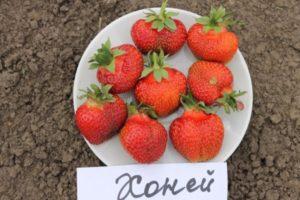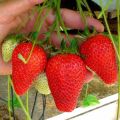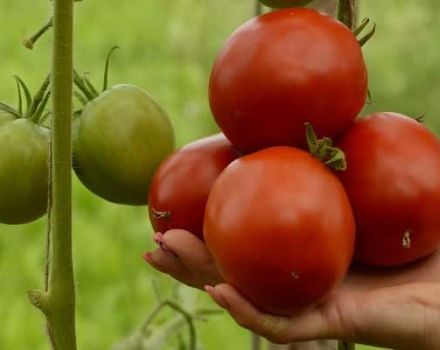Why some strawberry bushes do not bear fruit or even bloom and what to do
Strawberries, or garden strawberries, are grown by domestic gardeners in almost all regions. These fragrant berries are the first to saturate the body with vitamins and useful minerals after a long winter. There are no particular difficulties in caring for a plant, however, sometimes summer residents notice that some strawberry bushes do not bloom and do not bear fruit, why this happens, it is worthwhile to figure it out before starting to grow this crop.
Landing errors made
If you violate the rules and dates for planting garden strawberries, the bushes will not only not bear fruit, but will not form flower buds at all. If strawberries were planted outdoors last season and the gardener did not find any color on them next spring, then the procedure was carried out too late. The plant did not have time to properly take root in a new place before the onset of cold weather, therefore it did not form flower buds and, accordingly, berries. Garden strawberries planted in the fall may not survive the winter at all and freeze. The best time for planting bushes is the last days of July or early August.
If the gardener missed summer dates and started work in September, he should be prepared for the fact that there will be no harvest in the first year. In spring and summer, strawberry bushes will continue to form the root system and increase the leaf mass, and berries will appear only after a year.
The same applies to the spring planting of garden strawberries: this year there will be no flowers or berries on the bushes. The first harvest will delight the gardener only in the next season.
Another reason for the lack of flowering is considered to be the incorrectly chosen planting depth. If the hearts of the plant are underground, and not at ground level, this leads not only to a lack of fruiting, but also to decay of the bushes and their death. But even if the hearts are completely exposed, this will lead to the fact that the strawberries will soon dry out.

Lack of nutrition
It is impossible to make strawberries bloom without the addition of nutrients. Garden strawberries need both organic and mineral fertilizers. If the soil at the growing site is poor, plant feeding is carried out as follows:
- Fertilizers are applied for the first time in early spring, as soon as the snow melts. It is important to do this before the first leaves bloom. The composition of the first top dressing must include nitrogen, which contributes to the growth of green mass and the growth of shoots. A mixture is made, adhering to the following proportions: 1 tablespoon of ammonium sulfate and 2 cups of mullein per 10 liters of water. Bushes are watered with this solution at the rate of 1 liter per 1 copy.
- The next time garden strawberries are fertilized in mid-May, before flowering. To improve the palatability of the fruit at this time, use fertilizing, which includes potassium. You can use an infusion of mullein or potassium nitrate in the amount of 1 teaspoon per 10 liters of water.
- To get a harvest of large fruits, one more top dressing is carried out at the stage of ovary formation. Any complex mineral fertilizer is used, applying it by the foliar method.
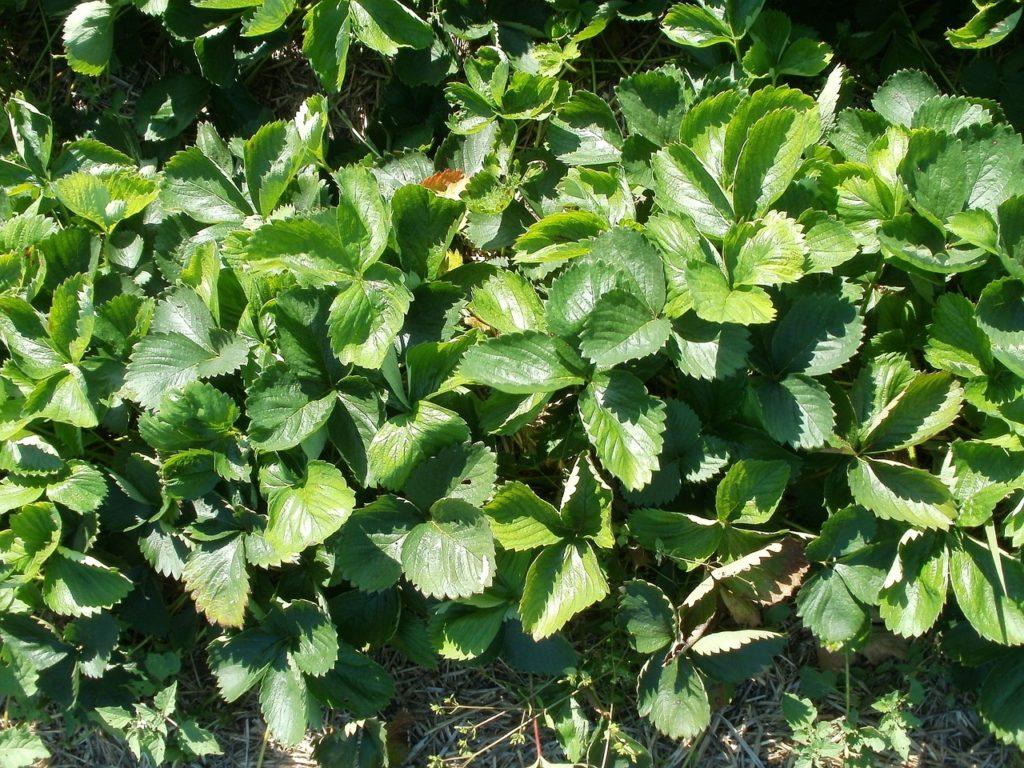
Fertilizers consisting of natural ingredients - wood ash, iodine, bread crusts are also considered useful.
Excess food
Excessive application of nutrient complexes is just as harmful to plants as their lack. With an excess of fertilizer, strawberries begin to build up dense foliage to the detriment of flowers and fruits. An overdose of nitrogen is especially dangerous. If the gardener noticed that the strawberry bushes have excessively increased the leaf mass, it is worth revising the schedule and composition of the dressings. In addition, it is necessary to abundantly shed the plantings of garden strawberries in order to quickly flush the nitrogen from the soil.
Lack of lighting
Due to the lack of sunlight, garden strawberries do not lay flower buds, from which berries are subsequently formed. The area for growing crops should be illuminated by the sun during the day.
In addition, the shade of tall buildings should not fall on the strawberry plantation. A plot with garden strawberries should not be located in places that are blown by the wind. Drafts cause the plant to ache and no color.
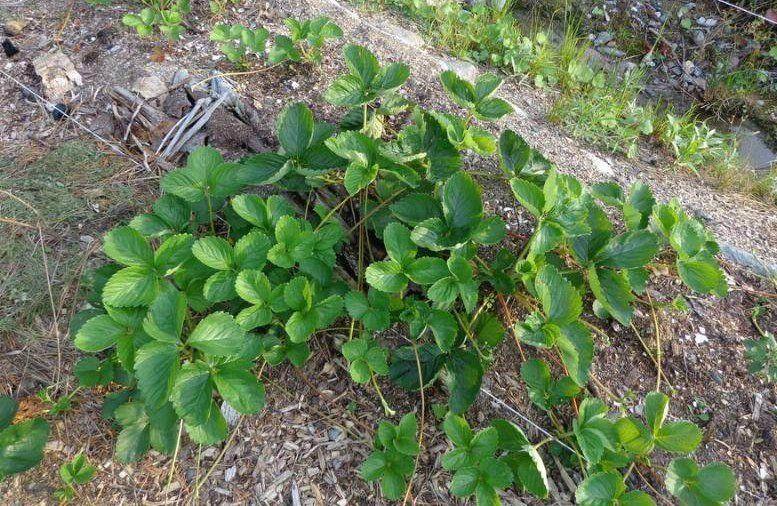
Weather
For the successful laying of flower buds, garden strawberries need certain weather conditions, and this applies not only to the spring-summer season, but also to the winter one. Very often, due to the lack of a full-fledged shelter in the cold season, frosts damage the hearts of the culture, and such specimens in the spring slowly begin to build up leaf mass and do not lay flower buds.
Lack of color is also caused by rainy spring. Due to excess moisture, the root system of plants rots, and the bushes disappear. When growing garden strawberries on heavy soils that do not allow water to pass through well, be sure to equip a high-quality drainage system when planting bushes.

Another reason for poor flowering of strawberries is the intense heat in the spring. If the gardener noticed that the plant lacks moisture, it is necessary to organize regular and abundant watering. Without irrigation, if the berries are tied, they will be small and sour.
Degeneration
In one place, strawberries bear fruit for no more than 3 years, so if the gardener noticed the absence of berries on the bushes, it is worth doing a transplant. In the case of remontant garden strawberries, it is recommended to rejuvenate the planting by dividing the bush. A new site is selected and the necessary fertilizers are applied. Young rosettes are separated from old bushes and transferred to another place. Already next season, the bushes will delight you with an abundance of tasty and large berries.
Weedy or not suitable for the region
In the absence of proper care, weed varieties appear on strawberry plantations that do not bloom and do not produce a crop. The source of their reproduction is considered to be the planting of a mustache of garden strawberries of unknown origin and seed propagation of the culture.Experienced gardeners recommend not to engage in the seed method of cultivating strawberries, since it does not preserve the technical characteristics of the original variety.

Weed specimens appear on plantations and in cases where unpicked ripe berries remain on the bushes. Their seeds spread throughout the site, germinate and drown out fruiting strawberry varieties. Of all the weed varieties, Bakhmutka, Zhmurka, Podveska and Dubnyak are dangerous to garden strawberries. They are distinguished by their fast growth rate and aggressive formation.
When choosing a strawberry variety for his site, the gardener should pay attention to its frost resistance characteristics. Lack of harvest is the result of an incorrectly selected option for your region. Bushes that are frozen in winter do not develop well and do not form flower buds.
Possible diseases
The development of diseases and the lack of their prevention also affects the quality of flowering and fruiting. Of the most dangerous diseases of strawberries, the following are noted:
- Gray rot. The causative agent is the fungus Botrytis, rainy weather contributes to its development. As a preventive measure, the fungicidal preparation Fitosporin is used, which is sprayed on the bushes a week before the expected flowering.
- Late blight. With this disease, the peduncles wither, and the berries are not tied. If you do not take action on time, strawberry bushes die 2 years after infection. For treatment and prevention, Trichodermin or Planriz is used, spraying strawberries 2-3 times during the growing season.
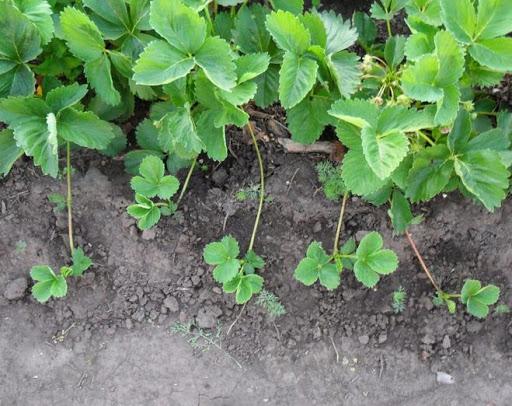
Pest attack
Insect pests that damage young bushes also become the reason for the lack of a bountiful harvest. Most often found on plants:
- Strawberry leaf beetle. The insect settles on the back of the leaf plate and lays eggs there. Young leaf beetles actively eat the leaves, which is why the bushes wither and stop fruiting. To scare off the pest, use tobacco dust and regularly loosen the soil in the aisles.
- Nematode. Because of this pest, the buds and ovaries are deformed. In the future, the bushes begin to lag behind in development and cease to delight with berries. For prevention, crop rotation is observed and the soil is disinfected before planting young bushes. Affected plants are immediately dug up and removed from the site.
If you provide strawberries with competent agrotechnical care, they will delight you with a harvest of large and fragrant berries every season.
